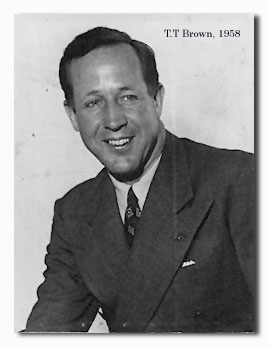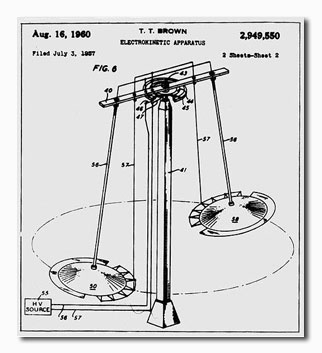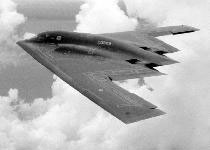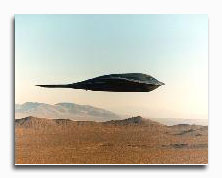Breakthrough Propulsion Physics
By Dominic McNamara © AUFORN - AURA South Australia
The Australasian UFOlogist Magazine Vol.9 NO.1
Past and present forays into alternative energy and the possibilities of travelling to the stars.
In the past, we wanted to explore the boundaries of all that we knew of 'terra firma'. But in the end, in order to fulfil that goal, we had no choice but to set sail. In doing so, we would often risk all on a venture which had no real or identified destination other than that of theorists and their believers. People would speculate and theorise as to what must lay beyond the next horizon. Even science and reasoning were now telling us of places yet to be reached by ocean voyages. But even those journeys best supported in evidence, not to mention destinations - some already known - gave up surprises along the way. After all, on a spherical world, surely the India we knew of at the far east of the European continent could be reached by travelling westward. Well yes, but not without encountering a group of islands subsequently given that very name, the West Indies.
Speculation and theory have led us to believe that there must be many worlds like those of our star system in the one galaxy, let alone in others. But how are we to know for sure?
In the search for other worlds beyond our star system, we have employed a great many means of 'seeing' things, mostly spectrally. As a result, a rather uncanny method was used to identify not only the presence of a large planetary object about another star but also to investigate some atmospheric properties!

As hard as it may have been for some of us to believe, some of these newly discovered planetary bodies were from star systems twice the age of our own and therefore, the planets could be twice the age of the earth. Anything that had begun living on such places would have had - arguably - twice as long to develop.
But the only way we really want to know about them, is to send out a searchlight in a can called an interstellar robot and send back the images from close range. That one day, no matter whom it is that finally receives the message, someone will be able to look at what these strange and unusual places look like up close. But the distances between stars are so massive that we would be unlikely to succeed under ordinary percussive means of thrust. So how are these machines going to get there, let alone send humans?
When we were struggling to make the world a smaller place, many ideas were put forward in order to combat the duration of ocean and continental crossings.
Finally, we learned how to fly.
Electricity or gravity?
The process of leaving this lifeboat and returning to the stars has been looked at long and hard by many. But perhaps we should go back to the beginning and look at the early experimenting that disappeared - for whatever reasons.
Probably the most talked about of early experimenters in this field would be T.T. (Thomas Townsend) Brown of the United States. Mr Brown was involved in some of the most extraordinary experimentation ever devised and witnessed by many, including top US officials. Brown's many patents range from an electrostatic motor to unusual high-fidelity speakers and electrostatic cooling, to lighter than air materials and advanced dielectrics. Instead of being well recognised, he is hardly known other than to those who follow in his footsteps (Eisen, 1998).
Early on in his work, Brown met Paul Alfred Biefeld, a classmate of Alfred Einstein. Biefeld encouraged Brown to experiment further after early successes and together they developed the principle which is commonly known to the unorthodox scientific community as the Biefeld-Brown Effect. This concerned itself with the conundrum of a highly charged condenser moving towards its positive pole and away from its negative pole.
 |
This is one of the men who were reputedly involved in the now infamous, if not mythical Philadelphia experiment. Whilst in the naval arm of the forces, Brown's inventions, including his minefield detector and working with de-gaussing of the ships, made for the salvation of many seamen. But that involved working with high energy coils and magnetism on a ship in dock when the famous disappearing trick of that fateful naval vessel was supposed to have taken place. Whilst demonstrating to Admiral Arthur W. Radford - ultimately joint chief of staff for President Dwight Eisenhower, his room in Pearl Harbour was broken into and his notebooks were stolen. According to accounts, he was contacted by people who told him, “We have your work; you'll get it back”. A couple of days later, they gave back his books and said, “We're not interested”. The reason they gave was the belief that the effect on his discs was purely ionised air or 'wind'. Of course we all know it would have taken a huge amount of such a thing to produce the effect described, but it now meant proving it by showing that it still worked in a vacuum. |
|||||||||
| Part of the original patent by T.T. Brown on Electronic Apparatus | ||||||||||
Some of you may have heard of Project Winterhaven, begun in 1952 in Cleveland, Ohio. This was a work of Brown's own making, in which he furthered the understandings of 'electrogravitics'. He eventually demonstrated two feet diameter disk-shaped transducers which travelled anywhere up to 17 feet per second. Watching the craft fly in a 20 foot diameter circle around a pole, Brown knew that according to science, this is not supposed to happen. |
||||||||||
 |
||||||||||
 |
||||||||||
 |
||||||||||
| Obove 'La Vialette's illustrations of the B-2's electrogravitic system, showing postive and negative charge and flow distribution (Electrogravitic System) | ||||||||||
| The magazine Interavia reported in 1956 that Brown's discs were achieving speeds of several hundred miles per hour when charged with several hundred thousand volts! A wire running along the edges of the disc capacitors charged the devices but also tethered the discs to a mast of sorts around which they would 'hum', according to witnesses who also claimed that the discs glowed a type of purple in the dark. Thereafter, La Societe Nationale de Construction Aeronautique Sud Oest (SNCASO) from France offered Brown funding and he speedily went off and not only built better devices, but also had greater testing done. He tried forwarding the results to those in military circles who had previously shunned him, stating, “The experiments in Paris proved that the anomalous motion of my disc airfoils was not all caused by ion wind. They conclusively proved that the apparatus works even in high vacuum. Here's the documentation…” |
||||||||||
 |
||||||||||
| Above: A collection of B-2A by Northrup Grumman | ||||||||||
But he would get no further. Brown then decided to look at the aerospace industry itself. What he had no idea about was that such an industry may have been militarily fed and funded on Brown's earlier results; something which is highly suspected by all who delve into the paper trail. All arrive at the same place. An independent called Paul La Violette, Ph D, tracked the Winterhaven work involving a 1954 experimental demonstration in front of air force officials and men from major aerospace companies in which a three foot diameter craft flew around a 50 foot diameter course so fast that they stamped the results 'classified'. Recently, says La Violette, declassified documents indicated that by September 1954, the Pentagon had launched a program to develop antigravity along the lines of results borne out of Project Winterhaven.
A further breakthrough in tracking Brown's work came when a few establishment scientists spoke out about formerly classified projects. It was stealth technology. The B-2A bomber was amongst them. The softening of the sonic boom, as Brown had talked about in the 1950s, a dielectric flying wing, charged leading edges and the dumping of ions into the exhaust; all of these clues seemed to be a summary of Brown's work, some of it now more than forty years old. Many respected investigative ex-military and aerospace personnel have since arrived at the same conclusions.
It is interesting to remember that a lot of Brown's work was well within what you would call mainstream science, but that not much of his success was publicised. If you ever get the chance to compare the work and patents of Brown and NASA's patents covering an orbital manoeuvring system, you won't find much to separate them.
So now the first step is covered, but not much of it will be reported in history as having been by one Thomas Townsend Brown. But I will remember that the first tested apparatus for which there were repeatable results in the interests of the common good of all was demonstrated by a man determined to expose a truth which could help in the leaving of this star system.